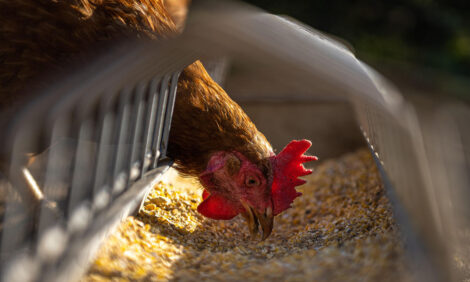



Getting to Grips with Campylobacter
New measures are to be set out by the European Commission and individual EU countries to clamp down on incidence of campylobacter food poisoning across the Continent, writes ThePoultrySite senior editor Chris Harris.Under the current regulations - Zoonoses Directive 2003/99 - Campylobacter, along with other pathogens such as Salmonella, Listeria, Echinococcus, Brucellosis and VTEC 0157, is an agent that has to be monitored in food production.
Currently the European Commission has established an effective monitoring regime and risk management programme for Salmonella, Steve Wylie, the deputy head of Public Health Protection, Livestock Demographics and Surveillance Group at the Department of Environment, Food and Rural Affairs in the UK, told a British Poultry Council seminar on food safety and controlling hazards in food production.
Now the authorities have turned their attention to the presence of Campylobacter in food.
Dr Wylie said that the importance in controlling Campylobacter was that it is the number one foodborne zoonosis in the UK and EU claiming 57,590 recorded cases in the UK in 2007 and 200,507 cases across 24 EU countries. This is compared to Salmonella cases which were 13,213 in the UK and 151,995 across the EU.
"There are more cases of Campylobacter than Salmonella and the gap is continuing to widen," Dr Wylie said.
"It is not life threatening, but it is more inconvenient."
The new controls that will be put in place follow the measures taken to control Salmonella.
The Salmonella measures were first established in poultry breeding flocks and then layer hens, and then broilers before being extended to turkeys and slaughter pigs and breeding pigs under the regulations in the Zoonoses Directive.
The aim of the directive is to ensure effective monitoring of zoonoses and zoonotic agents, related to antimicrobial resistance and the investigation of foodborne outbreaks.
The programme provides the necessary information to evaluate trends and sources of zoonoses and it also identifies hazards and assesses exposures and risks.
Dr Wylie said that monitoring is based on the systems put in place in each country in the EU, with the European Food Safety Authority holding a guiding and overseeing role.
Effective Monitoring
However, the regulations require each country to report on the progress of its monitoring programmes every year and how effective they have been in recording zoonotic incidence antimicrobial resistance, foodborne outbreaks as well as analysing the trends.
Dr Wylie said that to manage the risk all relevant stages of food production are examined, but the target has mainly been on farm level.
Salmonella - the initial target of the risk management programme - has seen measures put in place to detect and control the incidence and produce targets for reducing the prevalence of the zoonoses.
The regulation allows for the country authorities to set targets of either a percentage of the poultry flock remaining positive after a period of three years, or that to reduce a percentage of the flocks that are found to carry the pathogen by a certain amount each year.
Dr Wylie said that the consequences of failing to carry out the controls could involve financial penalties, but also could provoke trade barriers on exports.
Baseling Survey for Campylobacter
Now, with measures on the move for Salmonella, the Commission is turning its attention to Campylobacter.
The EU countries have six months following their initial monitoring to submit a national control programme, which will either be accepted or rejected within another two months and then, there is another year for the individual countries to get the control measures up and running.
Already in the UK, the baseline survey for Campylobacter has been carried out among broilers and the results are expected later this year. The survey took caecal samples from 10 birds from each of 384 slaughter batches and neck samples from one bird per batch. Antimicrobial resistance testing was also carried out on 170 batches.
However, Dr Wylie said that the kind of target that needed to be set and where it would be measured was causing a problem, because Campylobacter is very hard to control at farm level.
He said that examining the carcase or meat in the slaughterhouse was the best way to estimate the public health risk, but it does not tell where the problem originated are whether it was made worse on the farm or in transport or in processing.
Dr Wylie said that if measures can be taken at farm level, then further intervention can be put in place down the line and he added that targets for reducing the prevalence will be introduced where control measures are not in place.
Over the last year the Department of Environment Food and Rural Affairs has spent around £800,000 on Campylobacter research and reviewing the on-farm interventions with the Food Standards Agency.
It has been looking at the colonisation of the pathogen, risk factors and preventative measures and it has been developing a Multilocus Sequence Typing (MLST) database. It ahs also been looking at vaccination approaches to reducing the prevalence, immune responses and the way that Campylobacter is transmitted to humans.
Now the UK industry is to conduct a series of meetings to highlight the problems surrounding Campylobacter and attempt to draw up measures that can be placed into a control programme.
Just this month the Food Standards Agency in Scotland issued a report on the incidence in the country and further reports and discussions are expected.








